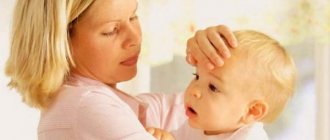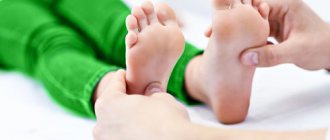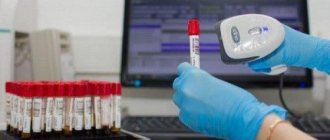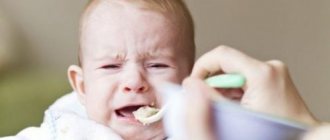Diarrhea occurs frequently in childhood. There are several reasons for this. First of all, this is due to the fact that the digestive tract is not fully mature, and not enough enzymes are synthesized. In addition, for complete digestion of food, there must be a certain microflora in the intestines, but the baby does not yet have it.
The baby’s immunity is not sufficiently developed to resist pathogenic agents that can cause bowel disorders. Diarrhea in a child can occur as a result of stress, eating new foods, overeating, or changing the feeding regimen. But there may be more serious reasons that, if left untreated, lead to consequences.
Depending on the frequency of bowel movements, the color of the stool and its consistency, as well as the presence of inclusions (mucus, blood), the doctor may assume the presence of a certain pathology. If white diarrhea appears in a child, then you should not make a diagnosis yourself, but should consult a pediatrician.
Only after collecting anamnesis and taking tests will the doctor make the correct diagnosis. The occurrence of abnormal white diarrhea in children occurs quite rarely and, as a rule, these are children under the age of one year.
Frequent bowel movements are considered if bowel movements are more frequent than three times a day.
Why does loose white stool occur?
Diarrhea in a child can occur as a result of:
- consumption of low-quality food products or after their insufficient heat treatment;
- presence of helminths in the intestines;
- drug therapy;
- neglect of personal hygiene rules;
- unbalanced diet;
- insufficient secretion of lactose;
- climate change.
One-time diarrhea in a small child is not a symptom of pathology. If loose white stools are not systemic in nature, and the child does not experience discomfort, is gaining weight, and has a good appetite, then there is no reason to worry.
The danger of diarrhea is that the contents of the intestines are quickly excreted without having time to absorb the necessary substances. The body also loses a lot of fluid, which results in varying degrees of dehydration.
If white diarrhea occurs repeatedly, then you need to consult a doctor to find out the cause. Several factors can discolor stool, including those that can be easily corrected and those that threaten complications.
Diet features
A child's diarrhea becomes white if there is a lot of calcium in the body or if there is an excess of carbohydrates in the menu. Since up to a year the child's diet consists mainly of breast milk or artificial formula, the color of the stool, in the case of accelerated peristalsis, acquires a light shade.
If a child’s white diarrhea occurs due to the listed factors (the child ate a lot of flour or white foods, the complementary feeding formula was changed), then it is not the color of the stool that should cause concern, but the fact that the stool has become liquid.
Liver pathology
Light-colored stool occurs when the liver is inflamed, since bilirubin is not excreted from the body. Many people know that with hepatitis the sclera and skin become yellowish, but this symptom appears much later. At the early stage of development of the pathology, the clinic is limited to changes in the color of urine (becomes dark) and feces.
Therefore, if a child has had white diarrhea for a long time, then you need to make an appointment with a hepatologist.
Delay in treating hepatitis can lead to significant liver damage
Pathology of the gallbladder or its ducts
Another reason for white stool in a child is bile duct obstruction. Bile gives stool a yellowish tint; if its amount is reduced, the stool becomes discolored. If the outflow of bile is obstructed, the stool acquires an extremely unpleasant odor.
This pathology leads to the formation of gallstones and pancreatitis. When the pancreas malfunctions, abdominal pain occurs, body temperature rises, vomiting appears, the pulse quickens, and the sweat glands produce more secretions.
Dehydration
White diarrhea can also be a symptom of dehydration. With this pathology, the child’s appearance and behavior change, saliva becomes viscous, the tongue is dry, urination is rare (and the urine has a strong odor), nausea and vomiting appear.
Dehydration can occur as a result of:
- vomiting or prolonged diarrhea (for example, caused by food poisoning);
- increased sweating (the room is very hot, the child is dressed warmly or moves a lot);
- sunstroke or heatstroke (being in direct sunlight without a hat or in a very hot, unventilated room);
- frequent urination.
In a young child, a loss of 10% of body weight due to dehydration can be fatal
Dehydration can lead to kidney failure, shock, and death. Therefore, if a small child has signs of a lack of fluid in the body, then it is necessary to urgently go to the hospital.
Disturbance of intestinal microflora
Stool becomes light and uncharacteristic in color due to dysbacteriosis, when the natural intestinal microflora is altered. This pathology can occur as a result of taking antibacterial drugs, since they destroy not only harmful, but also necessary microorganisms.
With dysbacteriosis, flatulence and abdominal pain often occur, stool contains a small amount of mucus and undigested food particles, diarrhea is replaced by constipation. Children lose their appetite, sleep deteriorates, they lose weight, and become restless. A fungus can settle in the intestines, leading to candidiasis.
Intestinal infection
White stool is also caused by rotavirus infection. The infection first manifests itself with vomiting and fever, then diarrhea of an unnatural gray or white color occurs.
Intestinal viruses can cause sore throat and rhinitis. If a child has diarrhea with blood or mucus, this indicates that a bacterial infection is present. In this case, it is necessary to take antimicrobial drugs, which must be prescribed by a doctor.
White diarrhea in a child over three years of age, although extremely rare, can still be caused by Whipple's disease. This is an infectious disease affecting the small intestine. With pathology, muscle pain, severe thirst, rapid heartbeat, and gingivitis appear.
Some medications have a negative effect on the liver. When taking Aspirin, Ibuprofen, Tetracycline, Augmentin, Paracetamol, stool may become discolored. If during drug therapy a child develops white or yellow-white diarrhea, then you need to consult a doctor to change medications.
Infection is the most common cause of light-colored diarrhea in young children.
Vomiting and loose stools in a child
Ambulance for children: 8 (812) 327-13-13
In a child (especially in the first year of life), the digestive system is very sensitive not only to the quality of food and its suitability for age, but also to any sudden changes in nutrition. Naturally, having received something unacceptable or unusual, the body strives to get rid of it as quickly as possible, either by expelling the contents of the stomach through the mouth (vomiting), or by sharply accelerating the passage of uncomfortable food through the intestines (diarrhea). However, nutritional errors, like food poisoning, are actually not the most common causes of vomiting and/or loose stools in children - most intestinal disorders in children are associated with intestinal infections (bacterial or viral). Of course, careful personal hygiene reduces the risk of intestinal infections, but there are no methods that guarantee 100% protection of your baby from them - the child lives in a non-sterile world populated by pathogenic microorganisms, many of which can be transmitted not only by contact, but also by air. by drip. Therefore, there is no need to conduct an investigation to find out which family member infected the child - all claims are against the one who created the microbes.
In case of vomiting and loose stools, consultation with a doctor is absolutely necessary. This is especially true for vomiting - this symptom can be a sign of a number of serious diseases that have nothing to do with the gastrointestinal tract. If vomiting is combined with a headache or appears after a head injury, call an ambulance without waiting for a visit from your local doctor. Save the last few portions of stool until the doctor arrives by sealing diapers or panties in a plastic bag - most likely, the doctor will want to examine them. Naturally, with vomiting and diarrhea, the main function of the digestive system—the absorption of nutrients—is disrupted. However, if the child’s body can tolerate a nutritional deficiency for quite a long time without serious consequences, then a lack of fluid and salt (so-called dehydration or dehydration caused by vomiting or loose stools) can sharply worsen the child’s condition and cause serious complications. Therefore, the first treatment measures for vomiting and diarrhea are hunger and drinking.
Hunger If a doctor's visit is expected in the next few hours, you should not feed the baby until he arrives. In cases where urgent medical consultation is not possible, you should take a break from eating for 6–8 hours (for infants this means skipping one feeding). In the future, the child is fed fractionally (that is, often and little by little). Breastfed babies should be fed every two hours, while reducing the feeding time. In children of the first year of life, you should refuse complementary feeding on the first day, limiting yourself to breast milk or its substitute. Older children can be offered crackers, biscuits, and rice porridge with water. The basic principle of nutrition in this case is that it is better to under-give than to over-give (if the child does not ask to eat, there is no need to feed him at all). It is better to get further dietary recommendations from your doctor - as already mentioned, for the problems described, consulting a doctor is absolutely necessary.
Drinking It should also be fractional. A single volume of liquid for infants should not exceed 10-15 ml, for older children - 30-100 ml (large volumes, stretching the stomach wall, can provoke vomiting). The child must be given water every 10–30 minutes (the smaller the one-time volume, the more often the child should be given water). The daily volume of liquid taken should not be less than the child’s daily needs, taking into account increased losses: for an infant this is 800–1000 ml, for older children – up to two to three liters. Don’t be afraid to overdose on liquid - here the principle is exactly the opposite: it’s better to give than not to give (this means the daily volume, not a single portion). Having sorted out the amount of liquid, it makes sense to discuss what should the child be given? The main drink can be water, weakly brewed tea, herbal teas (for example, chamomile or children's stomach tea). If the child is not used to unsweetened drinks, it is better to use fructose for sweetening, since sucrose contained in regular sugar activates fermentation processes in the intestines. However, such drinking is unable to compensate for salt losses (especially these losses are large during vomiting). Therefore, at least half of the daily volume of liquid should be represented by saline solutions. For this purpose, it is most convenient to use Regidron powders (they are sold at any pharmacy). The contents of the package are dissolved in one liter of water. If Regidron is not available, you can prepare a similar solution yourself: 8 teaspoons of fructose or sugar and ⅔ teaspoon of salt per liter of water. It is also necessary to give the child saline solutions because even with a significant deficiency of water in the body, the baby will refuse to drink if the deficiency of salts is even greater than the deficiency of water. Let us note that in case of gastrointestinal disorders, the correction of water-salt disorders is the main therapeutic factor, much more important than the use of the most modern and effective drugs.
Medicines And yet, what medicines can be given to a child for diarrhea and vomiting before the doctor arrives? At the very beginning of the disease, enterosorbents can be useful - Polysorb, Zosterin-Ultra, Polypefan, Filtrum (it is very difficult to give the beloved activated carbon to a child in an effective dose). Smecta will also help normalize stool - three doses a day, for children over two years old - a whole sachet, for young children - one sachet per day for a year of life. Before use, a bag of Smecta should be dissolved in 50 ml of boiled water (allowed in infant formula). If diarrhea or vomiting is accompanied by an increase in temperature above 38 ºС, the temperature should be reduced, since at elevated temperatures the loss of fluid to humidify the exhaled air increases.
WHAT SHOULD NOT BE DONE? Firstly, you should not try to flush the child’s stomach - this violent event can only lead to additional loss of salts. In addition, after this unpleasant procedure, you are unlikely to be able to give your child something to drink or give him the necessary medicine. In no case should you give your child antibiotics on your own, without a doctor’s prescription. Firstly, today antibiotics are not used so often in the treatment of intestinal infections. Secondly, they begin to act only on the second or third day of course use, so a few hours do not solve anything. The widely advertised Imodium (synonyms - Lopedium, Loperamide) also cannot be used independently - the drug does not have a therapeutic effect on the disease that causes loose stools, it simply inhibits intestinal motility. In addition, age restrictions and possible side effects of this drug make it possible to use it in children only under the supervision of a physician.
Let me emphasize once again: if a child has vomiting and/or loose stools, timely (that is, immediate) consultation with a doctor is absolutely necessary. Usually the delay in seeing a doctor is due to a banal reason - parents are simply afraid that the child will be “taken to the hospital.” If treated early, these fears are completely unfounded - most cases of intestinal disorders in children occur without any problems and can be treated at home. The need for hospitalization is often associated not with the severe course of the disease itself (although this also happens), but with dehydration that has developed during unsuccessful attempts to cope with the disease on one’s own. In any case, the doctor can only offer you inpatient treatment - no one will “take” your child anywhere without your consent. And finally, today it should be taken into account that in children, gastrointestinal upset may be the only initial manifestation of COVID 19 infection.
Kanter M.I. Pediatrician of the highest category
Why do white spots appear in stool?
White lumps in stool appear due to dietary habits. The child consumes a lot of milk, it curdles in the stomach, but does not have time to be digested in the intestines and comes out. This can happen if the baby is fed very rich milk.
If the body does not produce enough of the enzyme that breaks down lactose, then dairy products cannot be digested and come out in the form of cottage cheese. If there is lactose intolerance, then the child has foamy diarrhea.
The appearance of white lumps in the stool can also be a symptom of candidiasis. Fungi germinate on the intestinal mucosa, and gradually, mixing with feces, are excreted. With such a pathology, mucus can be seen in the feces.
What to do if your child has diarrhea?
When a child develops white, loose stools, the daily dose of fluid consumed must be increased, since diarrhea in young children causes rapid dehydration, which threatens the baby’s life. You need to drink often and in small portions.
Can you eat bananas if you have diarrhea?
It is recommended to give a teaspoon of liquid every five minutes. You can drink it with non-carbonated mineral water, chamomile or fennel tea, jelly, compote, or rice broth.
In the first four hours, it is better for the child to refrain from eating so as not to overload the intestines (this does not apply to infants). Afterwards you need to stick to a diet. Mashed potatoes and porridge cooked in water (especially rice) are useful because they contain starch, which coats the walls of the stomach.
Fermented milk products containing bifidobacteria accelerate the restoration of normal intestinal microflora. If you have diarrhea, you should avoid all fried, fatty, hot and spicy foods, as well as foods that weaken and contain dietary fiber.
You need to stick to the diet for two weeks after recovery.
To eliminate diarrhea, the child needs to be given sorbents, for example, activated carbon or Smecta. These drugs remove toxins from the intestines, cleanse it of pathogenic microorganisms and envelop the walls, thereby protecting the digestive tract. Sorbents are sold in pharmacies without a doctor's prescription.
We should not forget about basic hygiene rules. Wash your child's hands after each visit to the toilet and before eating. In order not to cause irritation to the perianal area, you need to abandon regular toilet paper, it is better to wash it under running water.
If acts of defecation are so frequent that the skin around the anus is irritated, it is recommended to lubricate it with sea buckthorn oil or a cream containing panthenol. This will speed up regeneration and protect the baby's skin.
A child has vomiting and diarrhea: what to do?
Diarrhea (diarrhea), nausea and vomiting are symptoms of acute gastroenteritis, that is, inflammation of the stomach and intestines. They usually appear unexpectedly and may be accompanied by a rise in body temperature, moderate abdominal pain, general malaise and weakness. Some call it poisoning and blame it on stale salad and raw eggs, others believe that they have caught the “intestinal flu.” In most cases, the cause of the disease remains unknown - but treatment tactics, as a rule, do not change.
Are poisoning and intestinal infection the same thing?
By and large, yes. True, doctors call poisoning the entry into the body of obviously dangerous, toxic substances, for example, inedible mushrooms. Infection involves the participation of microorganisms, primarily viruses and bacteria. They cause most acute gastroenteritis. So both those who are “poisoned” and those who are “infected” are actually dealing with an intestinal infection.
How can you catch an intestinal infection?
Some bacteria and viruses enter the body through contaminated water and food. Thus, eggs, raw meat and dairy products can contain salmonella and E. coli, and shellfish and lettuce can contain norovirus. Often it is not the bacteria themselves that pose the danger, but their toxins—poisonous substances. For example, home canned food may contain botulinum toxins, and creams and cakes may contain staphylococcal enterotoxins. This is why heat treatment of suspicious-looking food, as a rule, does not prevent poisoning: high temperature is not destructive to all bacteria and is not capable of neutralizing toxins.
The second option is to catch an intestinal infection directly from a sick person, especially if he does not follow the rules of personal hygiene: does not wash his hands after using the toilet, shares dishes and towels, and visits the pool and other public places during the acute period of illness. This is how rotavirus is most often transmitted.
Is it dangerous?
Most intestinal infections are fairly mild and symptoms resolve within 1–3 days. But with vomiting and loose stools, the body loses a large amount of water and electrolytes. This disrupts the functioning of vital organs and can lead to death.
Dehydration is the main danger, so it is important to recognize its signs in time. These include:
- dry mouth and thirst;
- rare urination (once every 6 hours or less);
- rich color and pungent odor of urine.
In severe cases, there is retraction of the eyes and fontanel (in children under one year old), absence of tears when crying, drowsiness and impaired consciousness.
How to treat?
Mild intestinal infections can be treated at home, but if in any doubt, seek immediate medical attention.
The main task of treatment is to promptly replenish the loss of water and salts. In the first 4 hours of illness, the child needs to drink at least 50 ml of liquid per kilogram of his weight. In this case, it is better to give the child food often and in small quantities, so as not to provoke vomiting. Thereafter, he should receive at least 10 ml/kg after each episode of diarrhea and 2 ml/kg after each vomiting. For example, a child weighing 15 kg needs to drink 750 ml of liquid in the first hours of illness, and then at least 150 ml after each loose stool and 30 ml after each vomiting.
It is better to use special solutions that are sold in pharmacies. Unlike other drinks, they have a balanced content of water and electrolytes. True, recent studies have shown that for mild forms of gastroenteritis, any drinks familiar to the child (compote, diluted apple juice) can be effective - but only if the child is more willing to drink them than pharmaceutical solutions.
What about cola?
Cola is not suitable for the treatment of acute gastroenteritis. It contains little sodium and potassium, but contains caffeine and a lot of glucose - all this only worsens diarrhea. The pH of cola is higher than the pH of gastric juice, so the common belief that cola has antiseptic properties due to acidity is nothing more than a myth. Perhaps the belief in the healing properties of cola came from third world countries, where the incidence of intestinal infections is off the charts and access to clean drinking water is limited. In such conditions, cola can really effectively combat dehydration. But still, recommendations to use one specific brand, and not just all sweet carbonated drinks, seem dubious, to say the least. Official European guidelines for the management of children with diarrhea and vomiting warn against the use of sugary carbonated drinks (as well as concentrated juices) for drinking children.
Is it possible to feed a child with diarrhea?
Need to. Infants need to be put to the breast more often, and if the child is bottle-fed, feed him the usual formula. Older children will benefit from cereal, rice, potatoes, bread, lean meat, applesauce, bananas, as well as vegetables and unsweetened yogurt. You should avoid fatty foods because they are difficult to digest.
What about antibiotics?
Antibiotics are not used to treat most intestinal infections, as they are most often caused by viruses. But “bacterial” diarrhea does not always require the prescription of antibiotics: at best they have no effect, at worst they can cause serious harm. Therefore, the detection of blood in the stool (which is typical for bacterial inflammation of the colon) is not a reason to start antibacterial therapy on your own. It is better to consult a doctor who will carefully examine the child and, most likely, prescribe a stool test “for the intestinal group” in order to clarify the specific pathogen and decide whether an antibiotic is needed.
That is, giving water and food is all the treatment?
In general, yes. The benefits of probiotics, sorbents and zinc (in children over 6 months of age) have recently been actively discussed. Researchers are most skeptical about the effectiveness of probiotics, but sorbents and zinc preparations seem to be able to reduce the duration of diarrhea by about one day. Antidiarrheal drugs for intestinal infections in children are prohibited. Enzymes are not indicated, and immunomodulatory drugs have no proven effectiveness. Thus, treatment comes down to properly watering and feeding the child, as well as monitoring his condition and, if alarming symptoms appear, immediately consult a doctor.
When should you seek medical help?
- the child is less than 12 months old (especially if less than 6);
- diarrhea and vomiting persist for more than a day, and you are unable to replenish fluid loss on your own;
- the child refuses to drink;
- the child shows signs of dehydration (see above);
- the child has a high temperature (above 38.9°C);
- Abdominal pain persists or worsens;
- the child has become lethargic and cannot be woken up;
- blood appears in the stool or vomit: not only the red color, but also the black color is of concern;
- you suspect that the child could have been poisoned by mushrooms, medicines, or other dangerous substances;
- the child has difficulty swallowing, has double vision, and has impaired speech (similar to botulism).
How can you reduce the risk of infection?
Careful personal hygiene, caution in choosing food, and vaccination will help with this. As is known, most cases of acute gastroenteritis in children are caused by rotavirus; it is against this virus that there is an effective vaccine, which is administered to children from 1.5 to 8 months of age in the form of drops in the mouth. From 2022, they promise to include it in the national vaccination calendar - then it will become available to all children free of charge.








